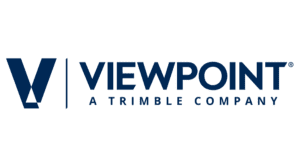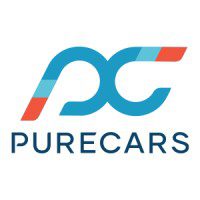You’ve found and hired new reps to fill the open roles on your team. Now, the next challenge is to deliver an effective, engaging sales onboarding program that gets those new reps ready to sell.
Sales onboarding is a key component of a winning sales readiness strategy. Great sales onboarding programs can speed time-to-productivity – and improve reps’ job satisfaction and retention.
But oftentimes, sales onboarding is easier said than done. According to the Sales Management Association, 62% of organizations feel their sales onboarding program is ineffective. What’s more, a report from Sales Enablement Pro found that 21% of organizations say one of the top three sales challenges in onboarding new sales reps.
In this guide, we’ll cover everything you need to know about sales onboarding. We’ll also address important questions that can help you build a more effective program for onboarding new sales reps, including:
Sales onboarding is the systematic process of getting new sellers acquainted with the organization and their role within it so they’re ready to be successful in the field. Sales new hire onboarding typically includes training on topics including:
Sales onboarding is a key component of any successful sales enablement program. Research from Heinz Marketing and Mindtickle found that 75% of all respondents who classify their sales enablement tactics as effective indicate that onboarding is an effective pillar of their program.
At larger organizations, onboarding is often the responsibility of a dedicated sales enablement team. However, at smaller organizations, onboarding may be led by another team, such as Learning and Development (L&D).
The length of time it takes to complete a sales new hire onboarding program varies. According to our 2022 State of Sales Readiness report, four weeks is the average time it takes for sellers who work for organizations that use Mindtickle to complete a sales onboarding program.
Organizations must strike the right balance. Of course, it’s important to get sellers up to speed as quickly as possible. That way, they can start contributing to the bottom line. However, it’s also important to maintain sales onboarding quality. That way, sales reps are well-versed on everything they need to know to be successful – and will retain what they learned during onboarding.
Research from UrbanBound found that 49% of companies are investing money in enhancing their onboarding programs. For good reason. Sales onboarding – when done well – can have a large, measurable impact on key business outcomes.
Great sales onboarding increases sales. According to CSO Insights, effective onboarding services that meet or exceed expectations can improve quota attainment by 16.2%. Effective onboarding programs get new sellers ready to sell as quickly as possible – so that means they can start contributing to revenue growth.
In addition, great onboarding increases rep engagement and retention. Per Spotio, 65% of employees indicate that training and learning opportunities positively influence their engagement. In addition, CSO Insights research found that engaged sales forces have lower turnover rates than those with disengaged sales teams.


Before discussing the best onboarding plan, it’s necessary to take a step back to explore the goal of onboarding: to get sellers ramped up and ready to sell.
Ramp-up time is a term that describes the amount of time it takes for a new hire to be productive after joining a company. When a seller is ramped-up, they’re able to contribute to revenue growth.
While completing onboarding is important, what really matters is that a rep has what it takes to sell. With that in mind, there are certain steps to take to support your new sellers – and help ensure they’re ramped up as quickly as possible.
Be sure to document your ramp-up plan. It should include components such as:
The length of ramp-up and milestones the rep should hit along the way.
A list of the skills and behaviors your reps need for success.
Each new rep needs to learn about things including your product, customers, market, processes, and tools.
If you provide resources for on-demand, self-guided learning, add links so reps can easily find them.
Be sure to share a copy of your ramp-up plan with new reps. Doing so will set expectations and allow the reps to take ownership of staying on track.
Sales onboarding is the first step of a longer ramp-time for reps. It’s typically the first experience a new hire has with your company, so it’s important to get it right.
Your sales onboarding program should map the skills, processes and content that’ll help reps achieve both short- and long-term success at your organization. It should be focused on the areas most important to your business, including market, customers, product, and sales motion.
According to CSO Insights, industry average ramp time is 6-9 months. Formal sales onboarding lays the foundation for success. However, reps also need sales training and coaching to ensure they’re truly ready to perform in the field.
Training and coaching should be personalized to the strengths and weaknesses of each individual rep. After all, it’s not efficient to provide training and coaching on a topic a rep has already mastered.
It’s also important to provide plenty of opportunities for on-demand learning. That way, reps can access training at their own pace. In addition, on-demand training modules help ensure consistency in the sales onboarding process.
It’s important to track each rep’s progress completing the onboarding process. But simply completing certain steps doesn’t guarantee mastery. As such, it’s key to provide knowledge tests throughout the process. That way, you can identify gaps and provide additional training where it’s needed.
Some areas you should test for include (but aren’t limited to):
A Readiness Index can also help you holistically gauge each rep’s sales readiness. A Readiness Index – or other performance metrics – can help managers determine where reps need additional training and coaching so they’re ready for success in the field.
According to Gartner, 70% of information sellers learn during training is lost within a week. It’s important to create a culture of learning that empowers reps to continuously hone the skills and competencies needed for sales success.
All too often, training beyond onboarding is non-existent. Or, it’s limited to the annual sales kick-off. Yet, ongoing learning is tied to sales success. According to a survey from Mindtickle and Heinz Marketing, among respondents who hit 75% or more of their quota, 90% participate in sales training on a monthly basis.
The maturity of sales onboarding programs varies widely. At some organizations, sales enablement managers share onboarding materials via email or a shared drive – and progress is tracked via a spreadsheet (or not tracked at all).
Other organizations leverage sales onboarding software to power their sales onboarding programs. Often, this involves using multiple, disparate systems that each address a single onboarding challenge.
A better approach is to leverage a complete sales readiness platform that addresses all of these sales onboarding challenges. A sales readiness platform like Mindtickle can power your entire sales readiness strategy – including onboarding and ongoing learning.
When determining the best sales onboarding platform for your business, there are certain things to look out for.
A strong sales onboarding platform is easy to use – both for reps and those creating the sales onboarding program.
New reps are more likely to use a sales onboarding platform if it’s easy to use. A sales onboarding platform should be easy to navigate, and each rep should have a clear idea of the steps that are expected of them.
In addition, it should be easy for sales enablement managers to create and deploy sales onboarding training in the platform. The best sales onboarding platforms offer templates, which are out-of-the-box, yet customizable. These templates eliminate the need to create sales onboarding programs from scratch. That means sales enablement managers can launch programs faster – and reps can get ramped faster.
Oftentimes, reps are forced to use myriad platforms throughout the sales onboarding process. For example, they might use one platform to access training modules – and another to access content. This can cause confusion and disengagement.
A better approach is to leverage a unified onboarding platform. With such a platform, new sales reps can access everything they need to get ramped up in one central location.
Sales onboarding ramp-up shouldn’t be one-size-fits all. A rep who has mastered certain skills and competencies shouldn’t receive the same training as one who is struggling. If they do, they’re likely to become disengaged.
Instead, a sales onboarding platform should allow for a personalized onboarding experience that addresses the unique needs of each sales rep. The best sales onboarding software allows sales leaders to determine a rep’s sales readiness – and then deliver training and coaching that strengthens key skills.
At a minimum, sales onboarding platforms should allow sales leadership to easily see how sellers are progressing through sales onboarding and the initial ramp-up period. However, consumption of training doesn’t guarantee retention. As such, it’s important to incorporate assessments throughout sales onboarding and the ramp up period to ensure reps are retaining what they’ve learned. If there are any gaps, additional training and coaching can be delivered to close them.
In addition, the best sales onboarding programs allow sales leadership to understand the readiness level of each sales rep. This involves continuously measuring each rep against the key skills and competencies required for success at the organization.
Handing new sales reps a pile of materials to read isn’t an effective way to get them up to speed. Instead the best sales organizations incorporate different training methods into their onboarding to keep sellers engaged and ensure learning sticks. Some such methods include:
It’s important to ensure your sales onboarding software supports all training formats.
Gamifying your sales onboarding and ramp-up period is a great way to engage sellers and make learning fun. By employing gamification tactics like a leaderboard, new reps can see where they stand compared to their peers. This creates friendly competition – and a sense of accountability.


Great sales onboarding is imperative. But not all sales organizations get it right. While some sales onboarding programs do a great job engaging reps and accelerating their ramp time, others fall flat.
Fortunately, there are certain sales onboarding best practices that can help improve the effectiveness of your program – and get your reps ramped up faster.
It sounds simple, but it’s true. Your onboarding program will only be effective if you’ve hired the right sellers. If you hire someone who isn’t a great fit, even the best onboarding program isn’t going to fix that.
So be sure you have a thorough interview process for all prospective reps. Of course, it’s important to evaluate candidates based on past performance metrics. However, it’s equally important to evaluate them based on soft skills including:
There are two primary outcomes of sales onboarding. The first outcome is a successful ramp-up period that leaves reps with a good understanding of the ins and outs of your company and how it operates. This might include mastery of key sales processes, such as identifying qualified leads and understanding the competitive marketplace. The second outcome is long-term success. In other words, the factors sellers are measured by – such as revenue targets and quotas.
It’s important to set those success metrics early on – and be sure sellers have a good understanding of them. That way, your reps will understand what’s expected of them from their first day on the job. Plus, having these goals on hand will provide context to your reps as they progress through onboarding.
Once you’ve established your sales onboarding goals, it’s critical to ensure your onboarding program maps to the skills reps need to achieve them. Organizing your sales onboarding in this manner helps to define the skills and competencies sellers need to succeed. What’s more, this method of organization helps both you and your sales reps see how far they’ve come in the sales onboarding process.
Be sure to focus on areas that are especially important to your organization, which might include:
Real-time training and interaction is a key component of sales onboarding. However, be sure to incorporate on-demand learning into your sales onboarding, too. With on-demand learning, reps can learn at their own pace – whenever it fits into their schedule.
Some types of on-demand training modules to consider include:
Provide a list of the most common objections reps face – and tips and tricks for overcoming them.
Have your veteran sales reps provide their best tips for success
Give new reps the chance to see how you present your products to prospective customers
Of course, it’s important to track each rep’s completion of onboarding sessions. However, simply completing the required sessions and modules doesn’t guarantee a rep has absorbed the information and will be able to apply it in the field.
As such, it’s a best practice to incorporate knowledge tests throughout onboarding. That way, you can easily identify knowledge gaps – and provide additional training and enablement to close those gaps.
In addition, you’ll also want to continuously measure how prepared each new rep is to sell. This involves measuring each of the key skills and competencies needed for success in your organization.
Sales onboarding alone isn’t enough to guarantee a sales rep has the knowledge, skills, and competencies needed to be ready to sell. Ongoing training – or what we call everboarding – is integral to ongoing sales readiness among new sellers.


Getting new sellers up to speed quickly is important. Once a sales rep is fully ramped up, they can start contributing to revenue growth.
Sales onboarding is the first part of the ramp-up period for new sellers. But all too often, teams stop at sales onboarding and hope it’s enough to ensure sellers have what it takes to be ready and start closing deals. This is the wrong approach.
Instead, the best organizations understand that sales onboarding is just the first step. Ongoing learning is also critical to ensure sales reps are always ready for success in the field.
There is no single formula for sales onboarding. Instead, the best sales onboarding plan for your business incorporates the skills, processes, and content that your reps need to be successful. Your sales onboarding plan must focus on key areas including:
The best sales onboarding plans also ensure new sellers have a clear understanding of what they’ll be measured on – such as revenue targets and quota. Having this information will give your reps context as they progress through the onboarding program.
Sales onboarding is an important component of rep ramp-up. But on its own, it’s not enough. Consider the fact that, according to Gartner, 70% of what B2B sales reps learn during training is forgotten within a week; 87% will forget it within a month of training. That means the learning delivered during onboarding will be quickly lost – if it’s not reinforced.
As such, sales organizations must provide their sellers with ongoing learning opportunities that ensure learning is retained and is applied in the field. Here at Mindtickle, we refer to this approach of continuous learning as “everboarding.”
Sales onboarding is the first step of getting your new reps ready to sell. But static, timebound sales onboarding isn’t enough to guarantee your sellers have what it takes to be successful.
Winning organizations must incorporate ongoing learning – also referred to as everboarding – to ensure all sellers, regardless of tenure, are always ready to sell.
Ready to see how Mindtickle’s complete sales readiness platform can help ensure all of your sellers are always ready to sell?

© 2024 Mindtickle Inc. All rights reserved.